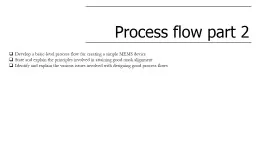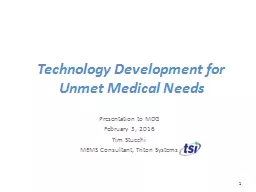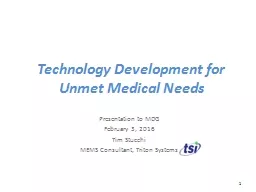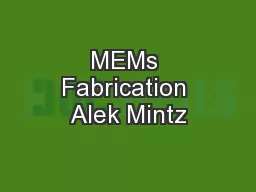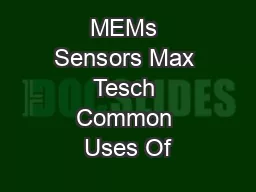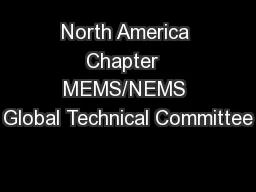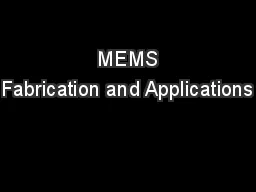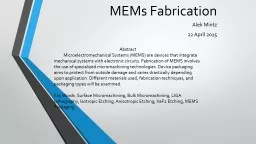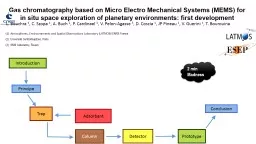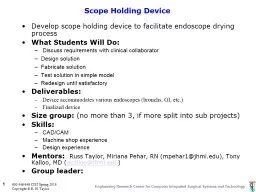PPT-Process flow part 2 Develop a basic-level process flow for creating a simple MEMS device
Author : pasty-toler | Published Date : 2019-02-14
State and explain the principles involved in attaining good mask alignment Identify and explain the various issues involved with designing good process flows
Presentation Embed Code
Download Presentation
Download Presentation The PPT/PDF document "Process flow part 2 Develop a basic-leve..." is the property of its rightful owner. Permission is granted to download and print the materials on this website for personal, non-commercial use only, and to display it on your personal computer provided you do not modify the materials and that you retain all copyright notices contained in the materials. By downloading content from our website, you accept the terms of this agreement.
Process flow part 2 Develop a basic-level process flow for creating a simple MEMS device: Transcript
Download Rules Of Document
"Process flow part 2 Develop a basic-level process flow for creating a simple MEMS device"The content belongs to its owner. You may download and print it for personal use, without modification, and keep all copyright notices. By downloading, you agree to these terms.
Related Documents

